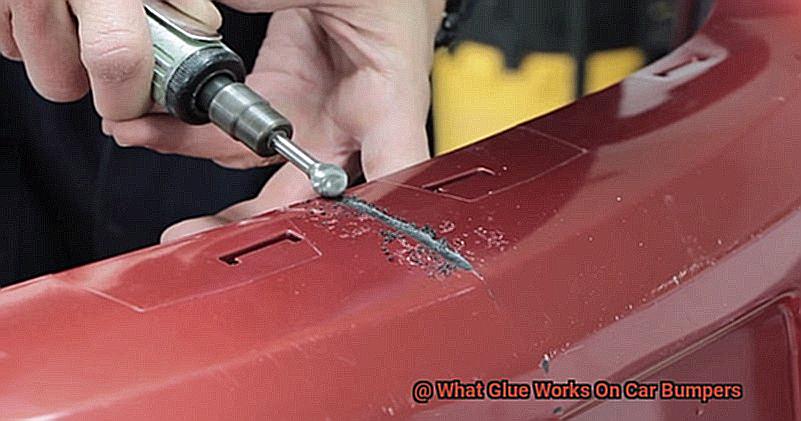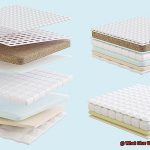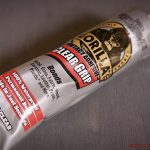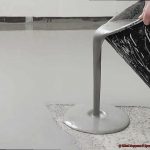Are you a car owner who’s tired of dealing with a damaged bumper? Whether it’s a minor crack or a missing piece, fixing it can be both time-consuming and expensive. Fortunately, there’s an alternative solution that’s gaining popularity in the world of car repairs: glue.
But before you start slapping on any old glue, it’s important to know that not all types work on car bumpers. Using the wrong kind can cause even more damage and cost you even more money in the long run. So, what glue should you use?
In this blog post, we’ll explore the different types of glue available for repairing car bumpers. From super glue to epoxy, we’ll dive into their strengths and weaknesses to help you make an informed decision. We’ll also provide tips on how to properly prepare your bumper surface before applying glue, as well as important safety precautions to keep in mind when handling these adhesives.
So whether you’re a DIY enthusiast looking for a quick and easy fix or simply curious about the best way to repair your bumper, this post is for you. Keep reading to discover which type of glue will get your car looking like new again.
Factors to Consider When Choosing the Right Glue
Contents
- 1 Factors to Consider When Choosing the Right Glue
- 2 The Different Types of Adhesives Used for Repairing Car Bumpers
- 3 Epoxy: A Two-Part Adhesive with Strong Bonding Properties
- 4 Super Glue: A Single-Component Adhesive with Fast Curing Time
- 5 The Importance of Considering the Material of the Bumper
- 6 Pros and Cons of Using Epoxy and Super Glue for Car Bumper Repairs
- 7 Tips for Applying Adhesives to Your Car Bumper
- 8 Common Mistakes to Avoid When Repairing a Car Bumper with Glue
- 9 Conclusion
Car bumpers may seem like a small component of a vehicle, but they play a significant role in protecting the front and rear ends from damage in the event of a collision. However, over time, these bumpers can become damaged and require repairs, which necessitates the use of the right glue. With so many different types of adhesives available on the market, it can be challenging to choose the right one for your specific repair needs.
To select the appropriate glue for repairing car bumpers, several factors need to be considered. Firstly, it is crucial to determine the type of material your bumper is made of. Plastic, fiberglass, and metal bumpers all require different types of adhesive that can bond effectively with their surfaces. Using the wrong type of adhesive could lead to weak bonds that do not hold up against everyday wear and tear.
The type of glue you choose is equally important. There are various types of adhesives available such as epoxy, super glue, polyurethane, and silicone. Each type has unique properties and is designed for specific applications. For example, epoxy is ideal for bonding metal surfaces and filling gaps or cracks in the bumper. Super glue cures quickly and creates an extremely strong bond that is suitable for quick fixes on small areas of damage.
Moreover, environmental conditions your car will face are also critical factors to consider when selecting adhesive for your car bumper. Factors such as temperature, moisture, and UV exposure can affect the performance of the glue used on car bumpers. It is essential to select a glue that is specifically designed to withstand these conditions to ensure that the repair lasts longer.
The Different Types of Adhesives Used for Repairing Car Bumpers
When it comes to repairing car bumpers, there are a variety of adhesives available in the market. Each type of adhesive has its own unique properties and can be used for different types of repairs. Let’s take a closer look at some of the most commonly used adhesives for repairing car bumpers.
Epoxy Adhesive:
Epoxy adhesive is a popular choice for repairing car bumpers due to its strong bonding properties. This adhesive is made up of two parts – resin and hardener – that must be mixed together before application. Once applied, epoxy adhesive dries quickly and forms a bond that can withstand high temperatures and pressure. Additionally, it can be mixed to different consistencies, making it suitable for filling in gaps or cracks in the bumper.
Polyurethane Adhesive:
Polyurethane adhesive is another popular choice for repairing car bumpers. This adhesive is known for its flexibility and ability to absorb vibrations, making it ideal for use on plastic bumpers. Polyurethane adhesive can also be sanded down and painted over once it has dried, making it a versatile option for bumper repair.

Silicone Adhesive:
Silicone adhesive is a flexible adhesive that is commonly used for sealing and bonding materials together. This adhesive is ideal for repairing cracks or small holes in car bumpers as it is waterproof and resistant to extreme temperatures. It can also be used to attach small parts to the bumper.
Super Glue:
Super glue, also known as cyanoacrylate adhesive, is a fast-drying adhesive that forms a strong bond between surfaces. While super glue may not be the best option for major bumper repairs, it can be useful for fixing small cracks or attaching small parts to the bumper.
Hot Glue:
Hot glue is another fast-drying adhesive that can be used for minor bumper repairs. This type of adhesive is easy to apply and can be removed easily if needed. However, it may not provide the strongest bond compared to other types of adhesives.
Epoxy: A Two-Part Adhesive with Strong Bonding Properties
Epoxy is a versatile and sturdy two-part adhesive that is highly sought after for its powerful bonding properties and ability to withstand extreme conditions. Automotive enthusiasts, in particular, favor epoxy for repairing car bumpers due to its durability and reliability.
To achieve the best results when using epoxy to repair a car bumper, it is crucial to begin with proper surface preparation. This involves cleaning the bumper thoroughly and sanding it lightly to create a rough texture for optimum adhesion. Once the surface is ready, mix the two parts of the epoxy according to the instructions, and apply it to the bumper using a clean brush or applicator.
The most challenging part of using epoxy is waiting for it to cure, which can take several hours or even overnight. During this time, it is essential to avoid disturbing or moving the bumper to ensure a robust and stable bond between the adhesive and the surface.
It’s important to keep in mind that once epoxy has cured, it can be difficult to remove. Therefore, precision application and removal of any excess glue are essential for a flawless repair.

Epoxy has earned its reputation as a reliable and effective adhesive for repairing car bumpers due to its exceptional strength and resistance to harsh conditions. By following proper preparation techniques, thoroughly mixing the two parts, and allowing sufficient curing time, you can achieve a long-lasting repair that will withstand even the toughest driving conditions.
Super Glue: A Single-Component Adhesive with Fast Curing Time
Look no further than super glue, a powerful single-component adhesive with a fast curing time.

Made up of ethyl cyanoacrylate, super glue is a versatile adhesive that can bond to various surfaces, including metal, plastic, and rubber. It’s no wonder why it’s a popular choice among car enthusiasts and professionals alike.
One of the things that make super glue so effective is its fast curing time. Unlike other adhesives that may take hours or even days to fully dry, super glue dries within seconds and forms an incredibly strong bond. This makes it ideal for small repairs on car bumpers, such as fixing cracks or small chips.
But before you start applying the super glue, it’s crucial to ensure that both surfaces are clean and dry. Any dirt or moisture can weaken the bond and cause it to fail. Additionally, it’s essential to use the glue sparingly because too much can cause the joint to be brittle and prone to cracking.
While super glue is perfect for small repairs, it may not be suitable for larger repairs or for bonding bumper covers to the car frame. In these cases, a more specialized adhesive may be necessary.
The Importance of Considering the Material of the Bumper
When it comes to repairing a car bumper with glue, you might assume that any old adhesive will do the trick. But if you want to ensure a strong and long-lasting repair, it’s crucial to consider the material of your bumper. Bumpers can be made of various materials, including plastic, fiberglass, and metal, and each material requires a specific type of glue.
Let’s take a closer look at each material and the appropriate adhesive for each one.
Plastic bumpers are the most common type found on modern cars. They’re lightweight, durable, and can be easily molded into different shapes. However, they’re also prone to cracking and breaking in accidents. To repair plastic bumpers, it’s essential to use an adhesive that can bond well with this material. Epoxy and cyanoacrylate (super glue) are two types of adhesives that work well on plastic.
Fiberglass bumpers are also quite common, particularly on sports cars or muscle cars. Fiberglass is a composite material made of glass fibers embedded in resin. It’s light and strong but can crack or chip if hit hard enough. To repair a cracked or chipped fiberglass bumper, you need an adhesive that can bond well with both the fiberglass and the resin. Epoxy and polyester resins are two types of glue that work well on fiberglass.
Metal bumpers are less common than plastic or fiberglass ones. They’re usually found on older cars or heavy-duty trucks. Metal bumpers are sturdy and can withstand a lot of abuse but tend to rust over time. To repair a metal bumper, you need an adhesive that can withstand high temperatures and resist corrosion. Welding is the best option for repairing metal bumpers, but if welding is not possible, then epoxy or polyurethane adhesives can be used.
Using the wrong type of adhesive for your bumper can lead to a weak bond or even further damage to your vehicle. So, always read the label carefully before purchasing any adhesive and make sure it is compatible with the material of your bumper. Taking the time to choose the right adhesive for your bumper can save you time and money in the long run.
Pros and Cons of Using Epoxy and Super Glue for Car Bumper Repairs
Repairing a car bumper can be a daunting task, but selecting the right adhesive can make all the difference. Epoxy and super glue are two of the most popular options for repairing car bumpers, each with their own set of advantages and disadvantages.
Epoxy is a two-part adhesive that is known for its strength and versatility. When mixed together, it creates a powerful bond that can withstand high levels of stress and pressure. This makes it an excellent choice for repairing car bumpers that are subject to a lot of wear and tear on the road. Epoxy can bond to a variety of materials including plastic, metal, and fiberglass, making it versatile for different types of repairs. It is also waterproof and resistant to chemicals, which means it can withstand exposure to harsh weather conditions.
However, there are some downsides to using epoxy. It can be messy to work with since it requires mixing the two components together before application. Also, it takes longer to set than super glue, which means you’ll need to wait several hours before the repair is complete.
On the other hand, super glue is a fast-drying adhesive that creates a strong bond quickly. This makes it perfect for small repairs where time is of the essence. It dries in seconds and comes with a precision tip for easy application. Super glue is also easy to use since it doesn’t require any mixing.
Despite these advantages, there are also some disadvantages to using super glue. It’s not as strong as epoxy and can break down over time if exposed to heat or water. Additionally, it doesn’t bond well to certain materials such as metal or fiberglass.
Ultimately, the choice between epoxy or super glue will depend on the type of repair needed and the materials being bonded. If you’re looking for a strong and long-lasting repair that can withstand tough conditions, then epoxy is your best bet. However, if you need a quick fix for a minor problem, then super glue may be the way to go.
It’s important to remember to take your time and read the instructions carefully when using either adhesive. Safety precautions like wearing gloves and protecting your eyes from any potential splatter should also be considered.
Tips for Applying Adhesives to Your Car Bumper

Your car’s bumper is not only essential for protecting you and your vehicle from collisions, but it also plays a significant role in the overall appearance of your car. In case of any damage, repairing it with the right adhesive is crucial. Here are some valuable tips and tricks to help you apply adhesives to your car bumper like a pro.
Thoroughly Clean Your Bumper
Before applying any adhesive to your bumper, make sure to clean the surface thoroughly. Dirt, dust, and grease can prevent the adhesive from sticking properly, resulting in an unsuccessful repair. Use soap and water to clean the bumper, then wipe it dry with a clean cloth.
Choose the Right Adhesive
Choosing the right adhesive is critical for a successful repair. Different types of adhesives have different strengths and weaknesses. For example, plastic bumpers require a two-part epoxy or polyurethane adhesive, while metal bumpers may require a silicone-based adhesive. Make sure to choose an adhesive that is specifically designed for automotive applications and has high-strength.
Test the Adhesive First
Before applying the adhesive to the entire bumper, it’s recommended to test it on a small section first. This will help you determine how the adhesive will perform on your particular type of bumper material and whether any adjustments are needed.
Follow the Manufacturer’s Instructions
When applying the adhesive, follow the manufacturer’s instructions carefully. Applying too much adhesive can cause excess glue to ooze out and create a messy appearance, while applying too little may not provide enough strength for a durable bond. The manufacturer’s instructions may include applying the adhesive in a specific pattern or using a certain amount of pressure when applying it.
Allow Adequate Drying Time
It’s important to allow adequate drying time for the adhesive before using or driving your car again. Rushing this process can result in a weak bond and potentially damage the bumper. Follow the manufacturer’s instructions regarding drying time, which can vary depending on the type of adhesive used and the temperature and humidity in your area.
Common Mistakes to Avoid When Repairing a Car Bumper with Glue
Don’t let these mistakes ruin your repair job. Here are some important tips to avoid when repairing your car bumper with glue.
Firstly, using the wrong type of glue is a recipe for disaster. Not all glues are created equal, and using the wrong one can lead to the bumper not adhering properly or even falling off completely. Do your research and choose a glue that is specifically designed for automotive repairs.
Secondly, failing to prepare the bumper before applying the glue is another mistake. This means cleaning the surface thoroughly and sanding down any rough spots. If you skip this step, the glue won’t adhere properly and your repair won’t last.
Thirdly, applying too much glue is a surefire way to create a mess. Excess glue can seep out and damage surrounding areas of the car, so it’s vital to apply just enough glue to create a strong bond without making a mess.
Allowing enough time for the glue to dry and cure is also crucial. Rushing this process can result in a weak bond that will not hold up over time. It’s essential to follow the manufacturer’s instructions for drying and curing times, and to avoid using the car until the glue is fully cured.
Lastly, don’t attempt to fix more serious damage with glue alone. While glue can be useful for minor dents and scratches, extensive damage may require professional repairs or even replacement of the bumper altogether.
gdigNK3Obtw” >
Conclusion
In conclusion, repairing a car bumper with glue is a practical and efficient solution for minor damages. However, choosing the right adhesive for your specific repair needs and bumper material is crucial. Don’t forget to take into account environmental conditions and curing time when making your selection.
Epoxy and super glue are two of the most popular adhesives for repairing car bumpers, each with its own unique advantages and disadvantages. Epoxy is perfect for creating strong and long-lasting repairs that can withstand tough conditions, while super glue is ideal for quick fixes on small damages.
To ensure a successful repair job, it’s important to clean the bumper thoroughly before applying any adhesive. Additionally, testing the adhesive on a small section first and following the manufacturer’s instructions carefully will help you achieve optimal results. And don’t forget to allow adequate drying time.
By avoiding common mistakes such as using the wrong type of glue or applying too much adhesive, you can achieve a flawless repair that will make your car look like new again. Remember to prioritize safety by wearing gloves when handling adhesives.
With these tips in mind, you can confidently tackle any minor bumper damage with ease.






